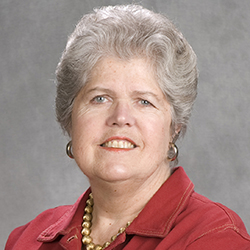
BY EMILY GILL
In January, the Trump administration threatened to withhold federal money from the state of California if it does not drop its requirement that private insurers cover abortions. It declared that California was in violation of the federal Weldon Amendment, which allows particular funds to be withheld when a state or local government discriminates against health care entities for not providing or paying for abortions.
Also in January, the Supreme Court agreed to decide whether the administration may allow employers to limit women’s access to free birth control under the Affordable Care Act of 2010 (Obamacare). This was also a warning shot to similar states, including Illinois, Maine, New York, Oregon and Washington.
In August of 2019, Planned Parenthood withdrew from Title X, the federal program providing low-income women with birth control, pregnancy tests and screenings for sexually transmitted diseases and for breast and cervical cancer, rather than comply with an administration rule forbidding patient referrals to doctors who can perform abortions. Approximate 3% of Planned Parenthood funds are spent on abortions; these cannot be public funds anyway.
First, it is simply common sense that greater access to contraceptives means fewer unplanned pregnancies, and therefore fewer abortions.
There is disputed evidence as to whether some contraceptives may be abortifacients. Part of this dispute, however, is due to conflict about when a pregnancy begins. Although some anti-choice advocates maintain that this is as soon as sperm and ovum unite, by medical definition pregnancy begins when a fertilized ovum implants in the uterus. As philosopher Peter Wenz suggests, “Since nearly one-half of fertilized ova die early as a result of failure to implant on the uterine wall, failure of implantation would be regarded as the gravest medical problem facing humanity” if personhood were attributed to them before that event.
More important, amidst all the fuss over the conscientious objections of health care providers or corporate entities that do not want to facilitate abortions, what are forgotten are the women and families whose conscientious beliefs impel them to plan their families with the use of the best birth control for them or in some cases to seek abortions. They may not be able to support more children; in others, fetal abnormalities are diagnosed that in the judgment of women or their families are incompatible with what those most closely involved deem to be a pain-free and/or burdened life. Women do not skip gaily into an abortion facility because they have frivolously changed their minds at seven months of pregnancy and do not want to be pregnant after all.
One woman, upon the discovery of severe fetal brain abnormalities with an unknown prognosis, agonized and decided with her husband to have an abortion at 23 weeks and 6 days. She asks of pro-life advocates, “What does life mean to you — the life that you are ‘for?’” The threshold will differ among different people. It is hard enough to answer this question for oneself; the government should not be trying to answer it for others. A miscarriage would have elicited compassion from others; the fact she had a choice potentially rendered her unworthy of support.
Every woman or family considering abortion has a different story. Their decisions are as much instances of conscientious belief as are the compunctions of any health care provider or employer.
Emily Gill is Caterpillar Professor of Political Science Emerita, Bradley University.

Recent Comments